What’s the deal with akebi, the perfectly purple, alien-like fruit that’s in season now in Japan?
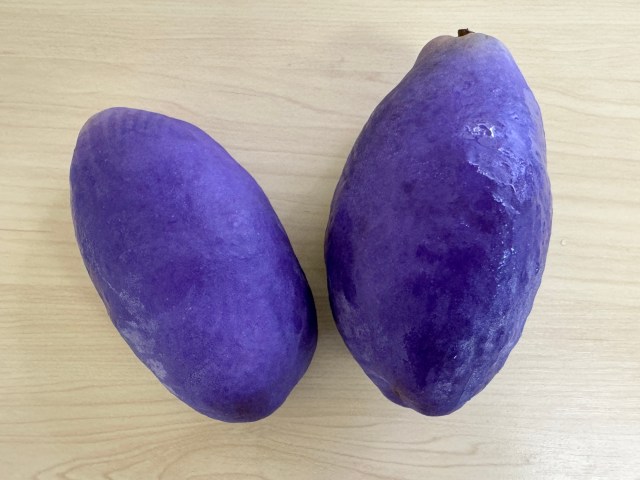
We make a simple dish with the fruit that would make Crayola proud by cooking it with…pork?!
“What the heck is that?!” thought our Japanese-language reporter Ikuna Kamezawa when she first laid eyes on the odd-looking fruit of the five-leaf chocolate vine shrub (akebia quintana), called akebi in Japanese. She’d known of its existence since she was a child but had never consciously encountered one until the produce section 0f this Ozeki supermarket in Tokyo. Its actual appearance was so far off from what she had imagined that she immediately messaged a friend to confirm that she wasn’t just imagining things.
Akebi are generally in season during the short window from October through November every year. It was hard for Ikuna to believe that such a deep purple fruit even grew in Japan in the first place (this particular one was from “Fruits Kingdom” Yamagata Prefecture). In fact, the outer coloring was so vivid that it gave the appearance of being some kind of poisonous plant or a strange, power-granting Devil Fruit hybrid from One Piece.
▼ One akebi cost 430 yen (US$2.88) at Ozeki, but she had no idea if this price was reasonable since it was her first time buying one.

There was a small sign next to the supermarket display recommending two delicious ways of preparing it–either by wrapping the sliced fruit with grilled pork ribs, or by stir-frying it with a miso seasoning. Ikuna had no idea if these prep ideas were supposed to be common knowledge in Japan, but in any case, she couldn’t NOT try one of them for herself at this point.
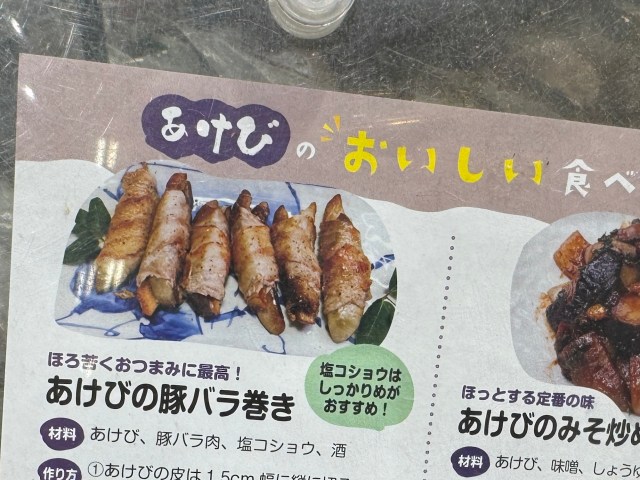
Once home and in her kitchen, Ikuna looked up the proper way to cut an akebi online. There would be a pulp surrounded by a thicker skin, so she cautiously made a lengthwise slit into the fruit.
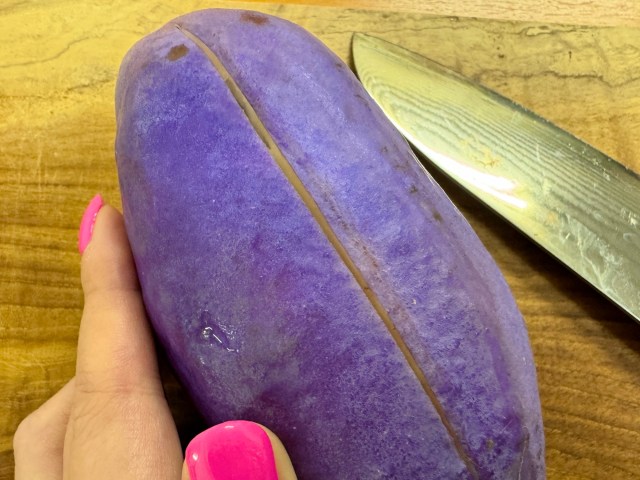
WHOAH! This cross-section was not what she was expecting at all. She let out an audible gasp.
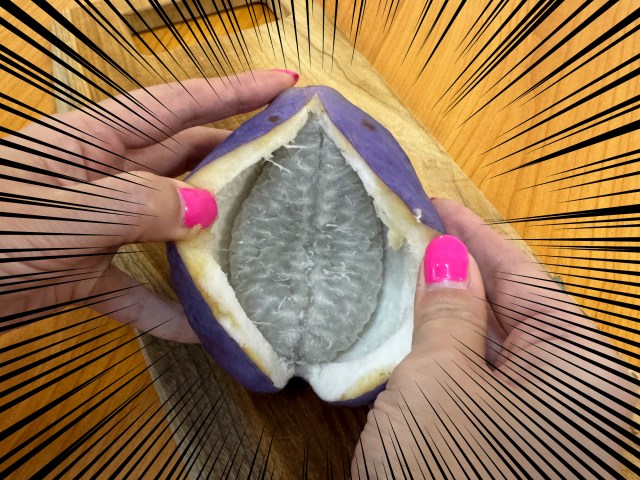
As a visual kei fan, Ikuna compared the appearance of the fruit’s fleshy pulp to something that she might see in a macabre Dir En Grey music video. It also gave off the vibe of an alien species about to be born from an unusual egg sack. She might actually die of shock if it were to suddenly start moving.
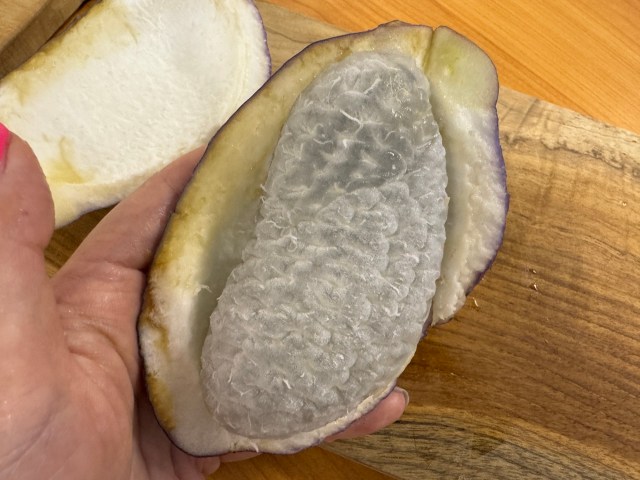
She called a coworker over for emotional support before slowly inserting her spoon into the pulpy part…
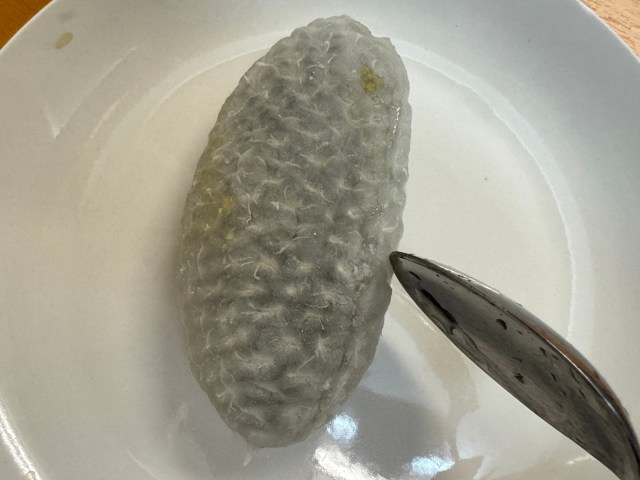
…and then recoiled in horror at what slowly oozed out.
▼ She had so much respect for the first person that had decided it was a good idea to eat this.
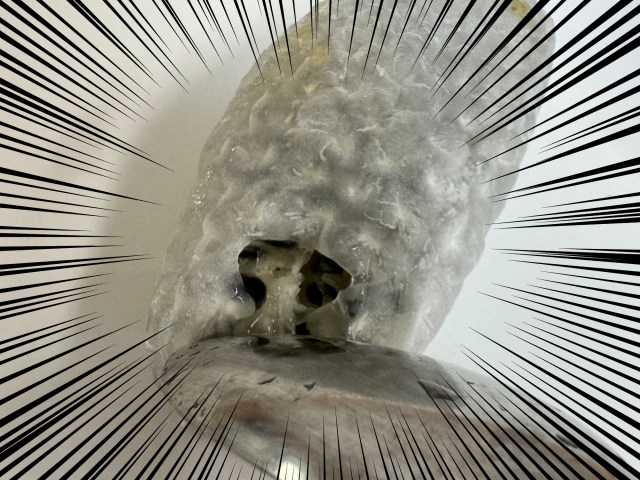
There was no going back now, though. Taking a deep breath, she prodded at the opening and more and more of the fruit seeds encased in a jelly-like protective substance spilled out. They clearly resembled frog eggs.
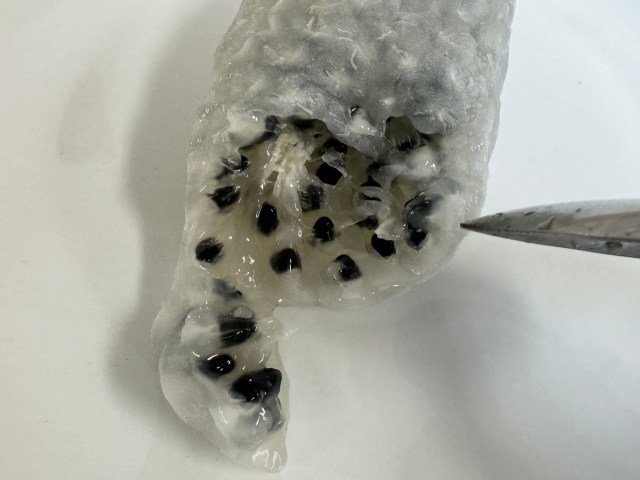
Taking a deep breath, she raised the spoon to her mouth and took a bite.
All her fears were pushed to the side because WOW–akebi pulp was delicious! It had the same kind of texture and sweetness as the mochi in a high-grade yukimi daifuku along with the freshness that only fruit can offer. The seeds, which aren’t generally supposed to be eaten, were the only drawback. But while she had imagined that the taste would be a bit more polarizing, it seemed liked something that most people would generally like.
▼ Ikuna: “Sorry, akebi pulp, for not realizing sooner how great you are!”
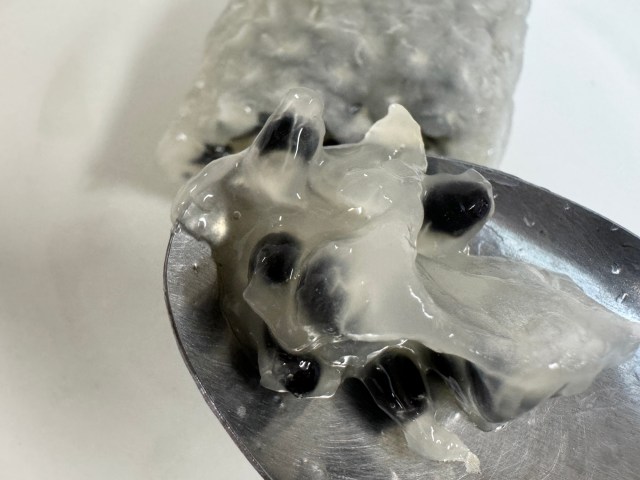
On the other hand, she hadn’t yet tried the firmer skin part, which is said to be slightly bitter. Most people apparently cook it in some way in order to reduce that taste. She therefore removed the center pulp and sliced the skin into appropriately thick chunks before dropping it into a pot and letting it come to a boil.
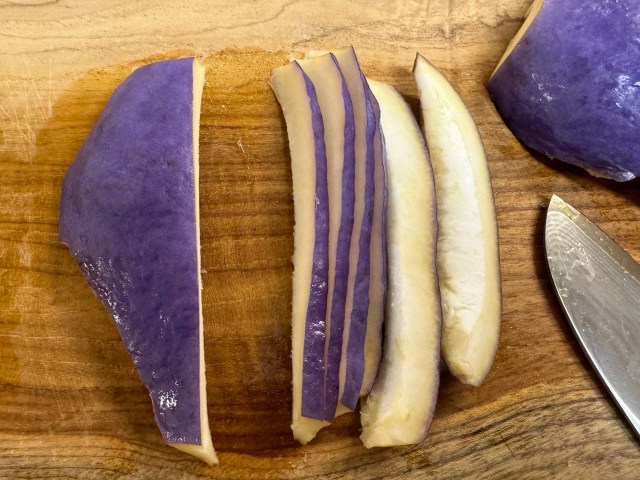
After boiling, it needed to soak in cold water for a long time to further reduce the bitterness. Ikuna left it this way for three hours.
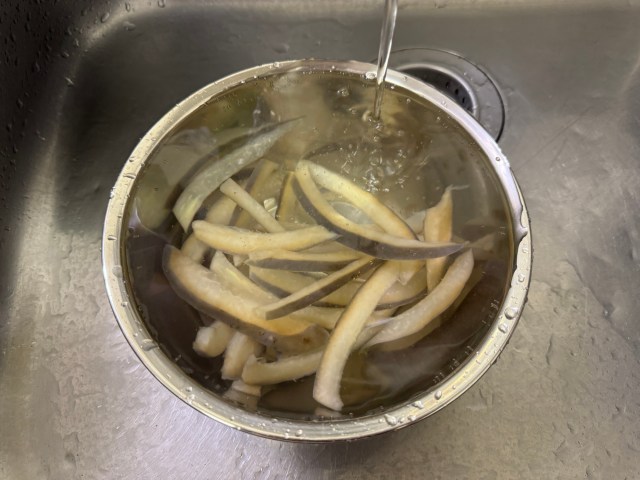
Next, since she had decided to follow Ozeki’s recipe for the akebi wrapped in sliced pork rib, she prepared all of the necessary items.
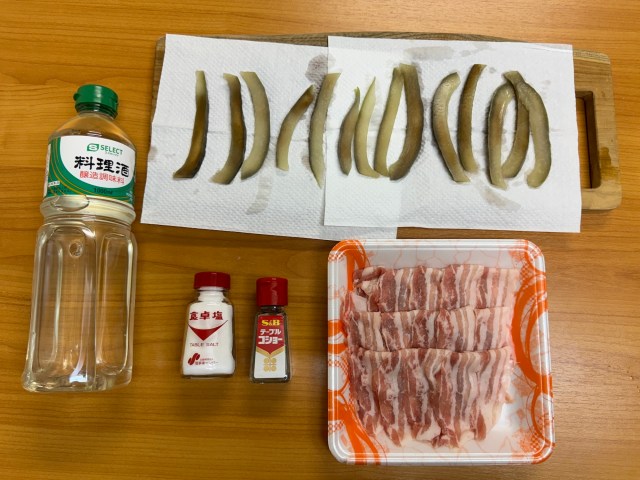
The recipe was quite simple because all she had to do was wrap a couple slices of fruit with the rib and sprinkle them generously with salt and pepper. It was at this point that she noticed that the outermost layer of skin had already lost most of its vibrant purple color.
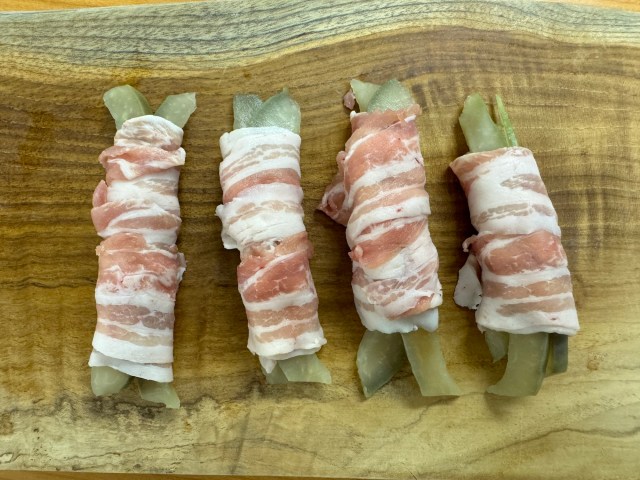
She cooked them over the stove for a while and then let them steam for a bit.
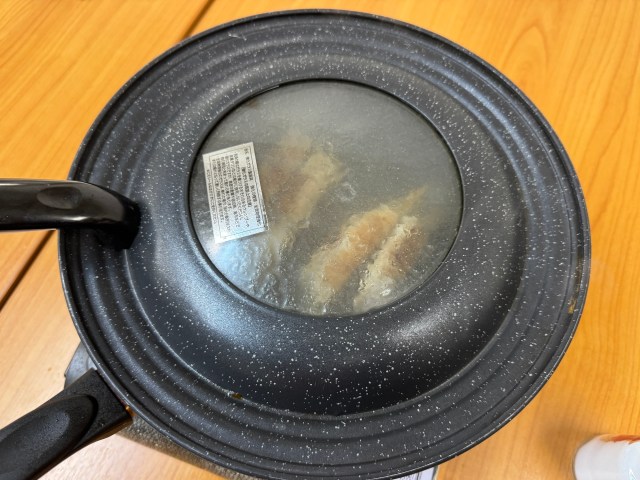
Here was the finished product!
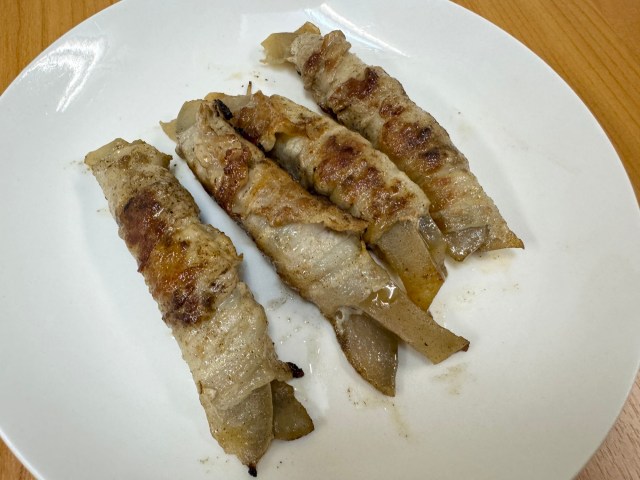
She thought that they looked pretty darn delectable. She couldn’t wait to pop one into her mouth.
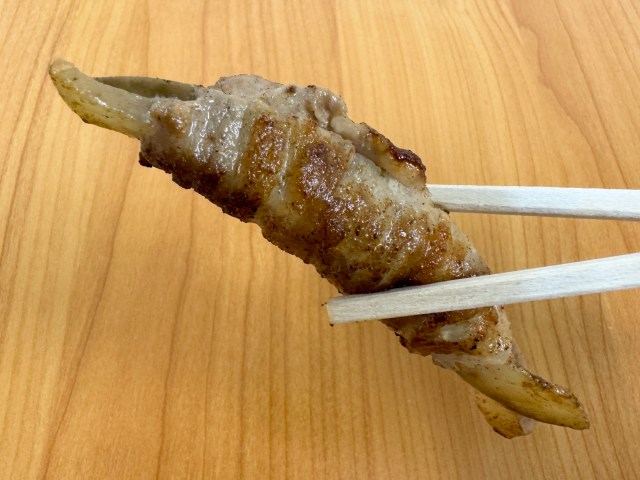
It was good–reasonably good. However, there was no denying that the true standout part of the dish was the seasoned pork. In contrast to that, the akebi lacked a large presence in terms of taste and texture. If Ikuna had to compare it to something, she thought it was kind of like a potato but with 10 times less presence. There was no strong flavor, no chewiness, and just a slight bitterness remaining (which may or may not have been her own fault as an inexperienced akebi cook). She settled on the following description of the fruit in this form: “It’s a bulking ingredient with no flavor.”
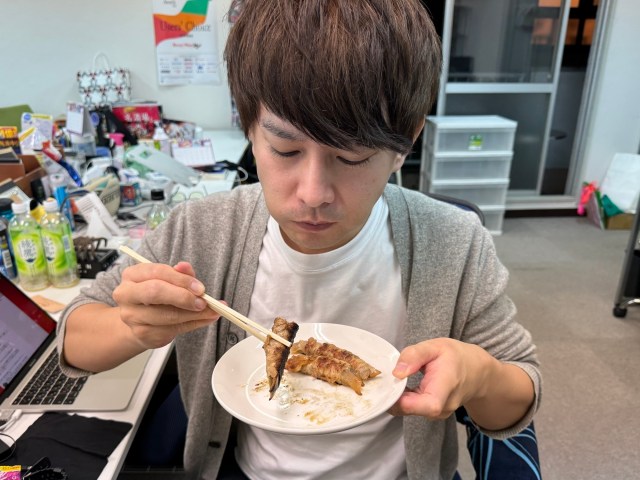
However, her fellow writer Takamichi just happened to be in the office at that time, so she let him try it, too. He thought it was absolutely delicious and that the slight bitterness could easily become addicting. Ultimately, it seems that everyone’s preference is just a little bit different.
Since the season to try akebi is so limited, you might want to look for one sooner rather than later if you’re in Japan around this time. While you’re at it, try looking for some other slightly more unusual fall fruits as well.
All images © SoraNews24
● Want to hear about SoraNews24’s latest articles as soon as they’re published? Follow us on Facebook and Twitter!
Credit:

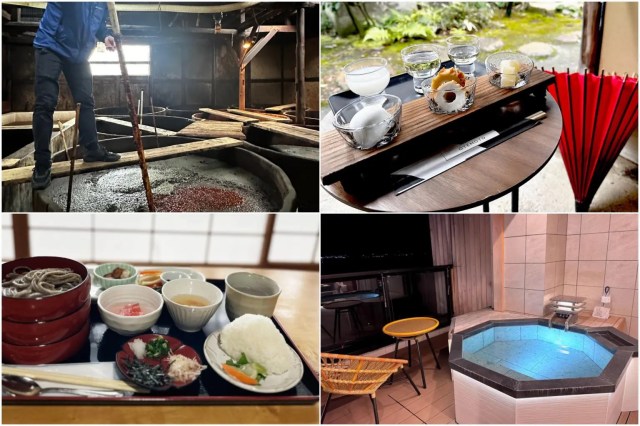


0 comments: